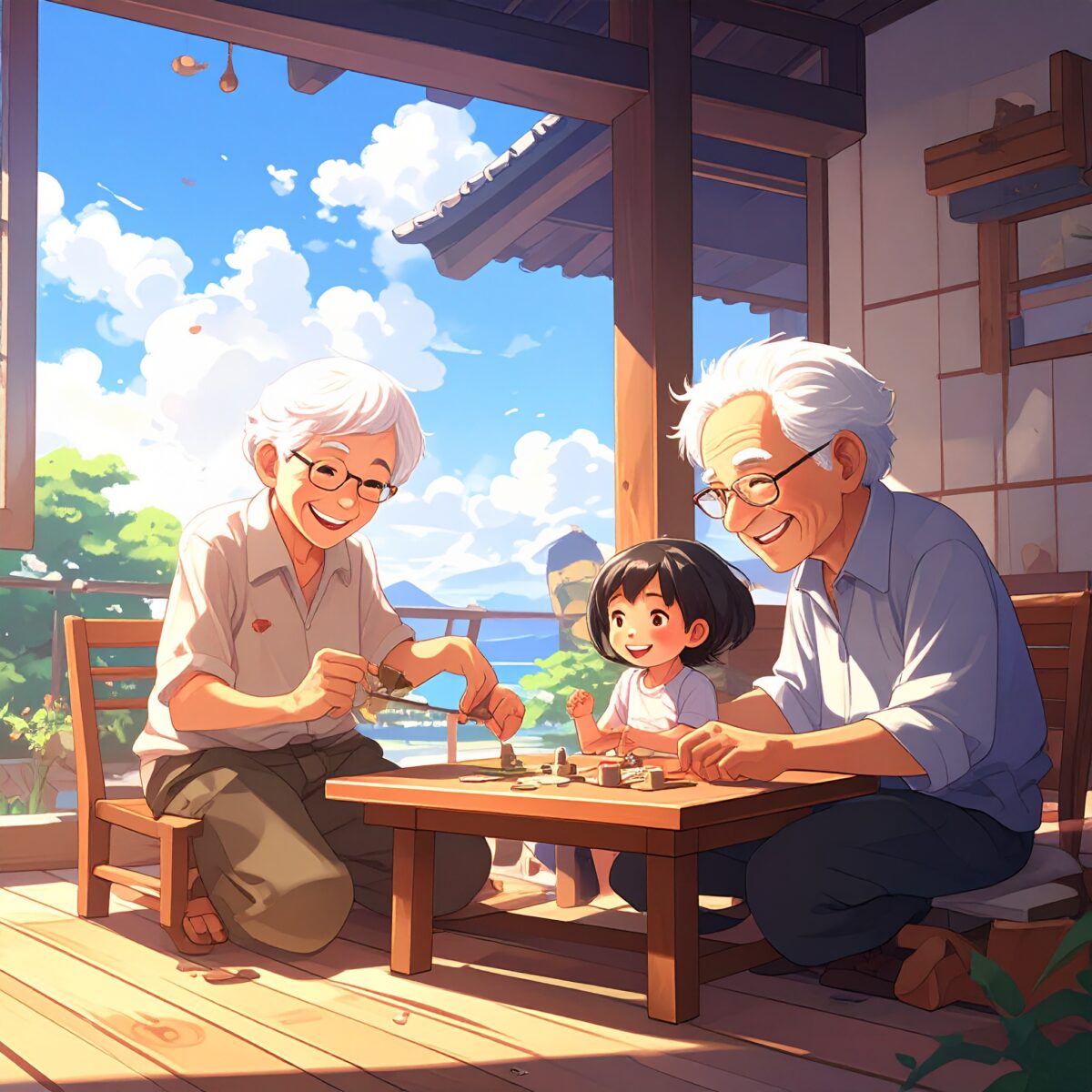The glittering glass pieces bounce with a soft chirin sound—followed by shared laughter between children and their grandparents. These tiny jewels that fit in the palm of your hand are called ohajiki, a traditional game that once captivated children across Japan during the Showa era.
Today, this nostalgic pastime is finding new life in Hong Kong households, embraced as a unique cultural experience. The spark came from a beautiful intersection: the fond memories of grandparents and the boundless curiosity of their grandchildren crossing paths across generations.
What Is Ohajiki?—A Simple, Finger-Powered Brain Game
Ohajiki is a traditional Japanese children’s game where players flick small, flat pieces—typically made of glass or plastic—using their fingers. The rules are simple: players take turns aiming to strike other pieces or pull them into their own territory, all with clever flicks of the finger.
This game became widely popular among common people in Japan from the Meiji to Showa periods, especially among young girls. Some ohajiki were treasured for their beautiful colors and shapes, others were handmade, and many were shared between siblings or friends—creating cherished memories that still live on in the hearts of today’s grandparents.
Now, this charming “Showa-era pastime” is making a comeback in Hong Kong households, offering a fresh cultural experience across generations.

Why Ohajiki, Now?—A Small Spark That Connects Generations
“This was a toy I used to play with when I was a little girl,” a grandmother says gently, handing a set of colorful glass ohajiki to her grandchild.
In Hong Kong, it is often grandparents—those who once studied in Japan or grew up familiar with Japanese culture—who are now naturally passing down these cultural treasures within the family home.
“It’s different from smartphone games,” says one Hong Kong father. “With ohajiki, kids get to touch, move, and think as they play.” He began playing ohajiki with his daughter after buying a set during a business trip to Japan. “Even though it was her first time, she got hooked right away. She especially loves collecting the pieces—now she’s even started building her own colorful set.”
The game’s visual appeal, its simplicity, and the joy of collecting resonate beautifully with the sensibilities of today’s children—making ohajiki both a nostalgic pastime and a fresh discovery.
Nurturing Sensitivity Through Play
Ohajiki is more than just a game. Flicking the tiny pieces with one’s fingers helps develop fine motor skills, concentration, and spatial awareness. At the same time, children naturally learn valuable social skills—such as taking turns, following rules, and accepting wins and losses.
One elementary school in Hong Kong has even started an after-school “Traditional Japanese Play Club,” where games like ohajiki, kendama, and cat’s cradle are introduced. A teacher involved in the program explains, “Many modern children are not used to structured play with clear rules. But with ohajiki, they experience positive learning—like trying again after a failed attempt.”
The school’s craft club also runs a popular project where students create their own ohajiki using paper or seashells. By engaging their hands while they play, children discover the joy of making things—blending creativity with cultural appreciation.

Cultural Heritage Begins at Home
One of the beautiful things about ohajiki is that it requires no special tools or skills—anyone can start playing right away. It’s also a game that transcends language, inviting joy through shared experience.
A grandmother speaks in Japanese, recalling fond memories; her grandchild responds in Cantonese. In these simple exchanges, a shared experience is born—one that bridges generations and cultures. This isn’t culture confined to a museum—it’s living heritage, passed down through everyday life.
Ohajiki is both a palm-sized piece of memory and a present-day playtime that strengthens family bonds. It’s a timeless treasure that brings generations together through the joy of play.
Conclusion: A Tiny Piece That Builds a Lasting Bond
In Hong Kong homes, conversations blossom around ohajiki, and three generations share laughter together. Within these everyday moments, the quiet spirit of Showa-era Japan lives on.
In an increasingly digital world, these hands-on, heart-to-heart forms of play are becoming all the more precious.
With just a single glass piece, ohajiki connects memories, sensibilities, and the future—it may well be a symbol of how small things can carry great meaning across time and culture.




